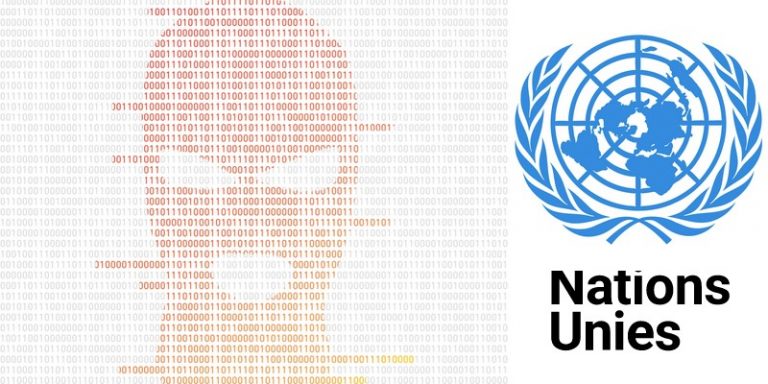
As part of the United Nations (UN) 2021 Counter-Terrorism Week, two reports were presented around the use of artificial intelligence in the world of terrorism or to fight against it. These documents were unveiled in the presence of 168 UN member states, as well as actors from industry, academia, civil society, regional organizations, and the UN Counter-Terrorism Centre and Office. The first dossier analyses the use of algorithms for terrorist purposes, while the second discusses the use of AI to combat terrorist use of the internet and social networks.
Both reports are the result of a partnership between the United Nations Centre against Terrorism, the United Nations Interregional Crime and Justice Research Institute and the Institute’s affiliated Centre for Artificial Intelligence and Robotics. The issue is: how can AI be used to combat the threat of online terrorism?
Fighting online terrorism with artificial intelligence
The first report proposed by deals with combating online terrorism through artificial intelligence. It is entitled: “Countering Terrorism Online with Artificial Intelligence – An Overview for Law Enforcement and Counter-Terrorism Agencies in South Asia and South-East Asia”. For this paper, the experts focused on the regions of South Asia and South-East Asia, the two largest settlements on Earth.
The paper is divided into five chapters:
- Chapter One: This section provides a general introduction to the context of terrorism, the use of the internet and AI in South and South East Asia.
- Second chapter: Data science, machine learning, deep learning, NLP, computer vision etc. Everything is screened in this second part as it presents and explains some key terms related to AI and digital tools.
- Third chapter: this chapter lists the applications of AI in the fight against the use of the internet and social networks by terrorists. Six use cases have been identified by the experts:
- Predictive analysis of terrorist activities
- Identification of alarm signals pointing to radicalization
- Detection of disinformation and fake news disseminated by terrorists for strategic purposes
- Automated content moderation and removal
- The fight against terrorist and extremist narratives
- Managing heavy demands generated by data analysis.
- Chapter Four: This section outlines the technology challenges that law enforcement and counter-terrorism agencies must be prepared to face. There are sub-sections on human rights, AI governance or the admissibility of AI in certain situations for example.
- Fifth chapter: this part provides recommendations to the same organizations to address these challenges and thus fight online terrorism. Building a regional approach, recognizing and enforcing the limits of AI, enforcing human rights and civil society protection, establishing technological safety locks, and developing knowledge around ethical and responsible AI are the recommendations proposed in the report.
Algorithms and Terrorism: The Malicious Use of AI for Terrorist Purposes
The second report deals with the malicious use of artificial intelligence and more specifically algorithms for terrorist purposes. The document is entitled: “Algorithms and Terrorism: The Malicious Use of Artificial Intelligence for Terrorist Purposes”. It contains nine chapters that highlight the admittedly “low-tech” use of digital tools by terrorists, taking into account the following problematic: “When will AI become a “powerful” instrument in the toolbox possessed by the terrorist and what can the international community expect vis-à-vis this drastic use?”
The brief is structured as follows:
- Chapter 1: gives a general overview, providing statistics that demonstrate the growing concerns among experts about the malicious use of this technology, including by terrorists.
- Second chapter: description of the general AI landscape. An overview of machine learning, deep learning, the different areas benefiting from the capabilities of algorithms, such as natural language processing and image recognition, as well as future trends in the use of this technology.
- Chapter Three: This section seeks to demonstrate the full threat of terrorist groups and individuals using new technologies by presenting several examples of terrorist attacks where technologies such as the internet and social networks have been valuable and powerful tools.
- Chapter Four: This chapter seeks to further contextualise the malicious use of AI by examining three categories of threats – cyber threats, physical threats and political threats – that have been identified in the existing scientific literature to demonstrate how AI can be used maliciously.
- Fifth chapter: this part puts forward a problematic. It provides some answers as to whether AI-based terrorism could be a conceivable reality, or whether it is merely a guess. Several examples of terrorist groups that have shown interest in AI or related technologies are presented, including videos using facial recognition or unmanned aerial systems such as drones.
- Chapter 6 provides a detailed overview of the possible malicious uses (both current and future) of AI by terrorist groups and individuals. This overview includes both those malicious uses that are documented and identified by research, and those that, despite the lack of evidence or literature, could become a future reality.
- Chapter Seven: presents three fictional scenarios to support visualizations of how AI could be used maliciously for terrorist purposes. These scenarios focus on attempts to guess passwords using AI, ransomware, drones with facial recognition, deepfakes, and transformed passports made available via an underground forum in a crime-as-a-service business model.
- Chapter Eight: Building on the information presented in the previous chapters, it assesses whether there is cause for concern about terrorist groups and individuals directly employing AI, for example, to enhance or amplify an attack. In this regard, the concepts of intent and capability are analysed to reach objective conclusions.
- Chapter 9: This final chapter concludes the report by proposing a set of recommendations for counter-terrorism and law enforcement agencies, as well as for policy makers, industry and academia. The report suggests several follow-up actions for capacity building to prepare for the possible future of AI-based terrorism.
Translated from Deux rapports de l’ONU se penchent sur l’utilisation de l’IA pour lutter contre le terrorisme en ligne









